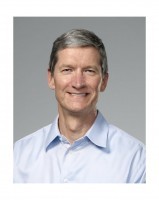Boosted in part by transit systems and other merchants adopting contactless payments, the Apple Pay mobile-payments service had another quarter of record volume and is heading for a milestone this year, Apple Inc. chief executive Tim Cook said Tuesday.
“Apple Pay transaction volume more than doubled year-over-year, and we are on track to reach 10 billion transactions this calendar year,” Cook said on the iPhone maker’s quarterly conference call with analysts.

Cook didn’t reveal Apple Pay’s actual volume for fiscal 2019’s second quarter ended March 30, but in January he said transactions totaled 1.8 billion in the first quarter. Apple Pay is now live in 30 countries and is coming to 10 more by year’s end, according to Cook.
Cook said increasing adoption of contactless payments on mass-transit systems is playing a role in Apple Pay’s growth. “More and more transit systems are accepting Apple Pay, and New York’s MTA system will begin to roll out in early summer,” he said. “As we’ve seen in places like London, Tokyo, and Shanghai, contactless entry into transit systems helps to spur broader Apple Pay adoption, and we believe this will get even more people using Apple Pay in the United States.”
Ticket seller Ticketmaster also recently announced that it will be accepting Apple Pay for online purchases and on its mobile app. And about 50 of Ticketmaster-served event and sports venues are rolling out contactless tickets this year, including most National Football League stadiums, Cook said.
Cook didn’t say much about the Apple Card announced just over a month ago, a Mastercard issued by Goldman Sachs Group Inc.’s consumer unit expected to debut this summer and designed to support Apple Pay. “It’s the first card to encourage you to pay less interest, eliminate fees, and give you daily cash on all your purchases, and customer interest to date has been terrific,” he said.
Apple Pay and the pending Apple Card are part of Cupertino, Calif.-based Apple’s fast-growing services segment, which is partially compensating for weaker sales of Apple’s iPhone flagship. Services generated $11.5 billion in revenues during the second quarter, up 16% year-over-year, and accounted for almost 20% of Apple’s $58 billion in total revenue, up from 16% a year ago. In contrast, Apple’s hardware business that includes the iPhone, iPad tablet, and Mac computers saw revenues fall 9% to $46.6 billion.





